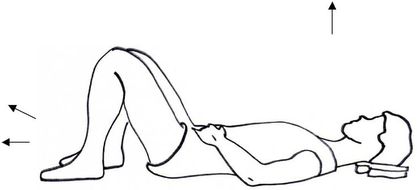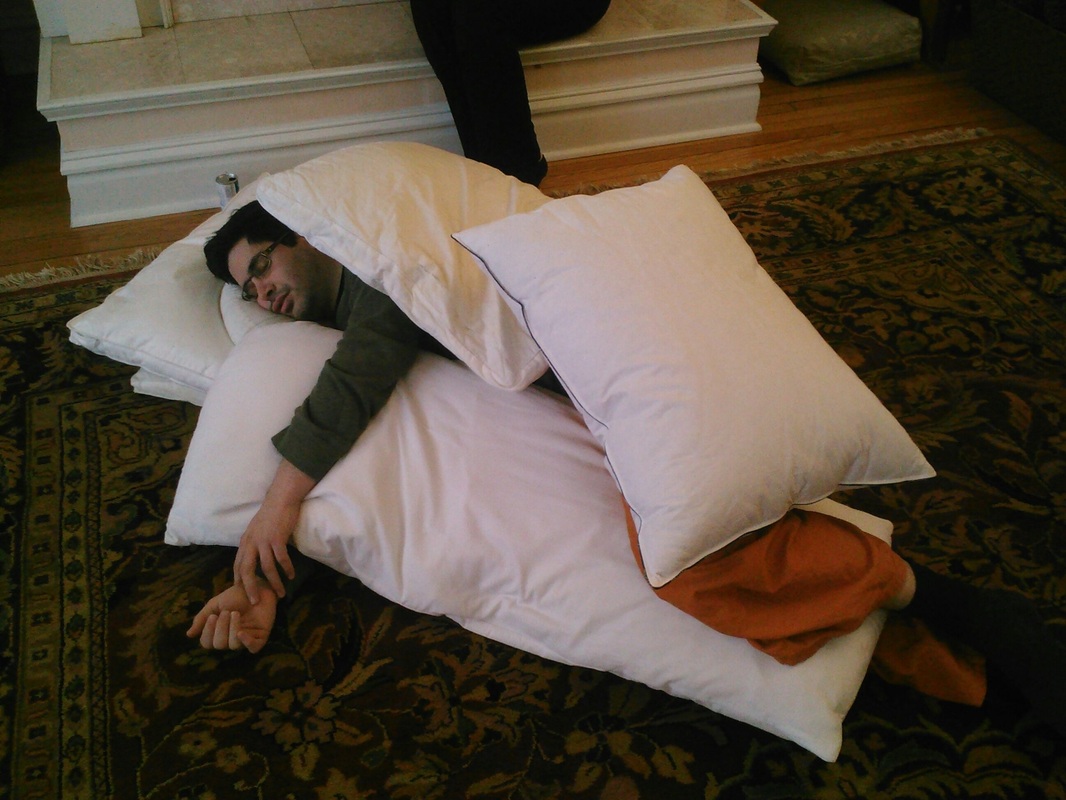|
Sleep has been on my mind for the last week or so, and for the same reason why most of us think about sleep: I haven’t been getting enough of it. My girlfriend has had a terrible cold, keeping her up at night coughing(this does not cause me to lose sleep in and of itself, but her getting up from bed in order to go and sleep on the couch and feeling her absence does(cue awwwwwws)). In addition, I live in an apartment on the top floor of a building where I don’t control the radiators. Usually when I go to bed, it is pretty warm, so I like to have covers off. Then, it cools off in the middle of the night, so I grab them in my sleep and pull them over me. However, this is not a solution, since the radiators click on a four am causing yet another brutal temperature change. Add to that the fact that my acting lifestyle and early morning classes cause inconsistency in my wake-up/bedtimes, and I have a recipe for early afternoon yawning and listlessness. Obviously, many of these factors are things I can’t control, just as you can’t control many of life’s variables. However, what I CAN control is how well I set myself up and create a buffer of good sleep practice so that damage from these disruptions can be minimized. Here are two ways AT can help you to set yourself up for sleep-cess: Pre-BedtimeConstructive Rest and Spinally -Supportive Set-Up. WAY #1: Pre-Bedtime Constructive Rest Lying on the floor with books under your head, knees towards the ceiling, and feet balanced with the heel and ball touching the floor. The height of the books should be such as to not allow your head to loll backwards, but not so high as to make you feel like the front of your throat is pinched. Your hands should be placed comfortably on your belly or lower ribs with your elbows wide and resting on the floor in a way so as they can feel supported. This nearly completely supported position reinforces the natural positive directions of the body: Neck freeing, spine lightly stretching, back widening , legs freeing away from the torso, arms relaxed and connected, elbows widening and released to the floor. This position can re-expand the discs between your vertebrae and helps you to regenerate spinal fluid, as well as releasing excess tension from your body and mind. What does this have to do with setting up sleep? I’m about to lie down to go to bed, so why should I lie down beforehand? Isn't that redundant? Fantastic questions. The constructive rest position is best done for a minimum of ten minutes and a maximum of thirty. After that time, you stop deriving benefit from the stretch on your spine and it can be difficult to sustain or possibly even uncomfortable. So you wouldn't want to stay in it all night. However, a twenty minute pre-sleep whole-body stretching lie down can help you to balance your body’s tensions in a way that promotes falling asleep faster as well as helping you to reach deeper levels of sleep. Also, if you do end up compressing in your sleep due to environmental factors, bad dreams, etc. you are less likely to strain your body in a way that disrupts your sleep or leaves you with morning aches-and-pains that makes it hard to start your day off right. Great, so that’s one way you can prime your body for good sleep. Now how do you set up your bedspace to maintain that freedom? WAY #2: Spinally Supportive Set-Up: Pillows Everywhere. The following is based on work done on my training course recently by AT teacher and physical therapist Christine Inserra and previous work by training course director Daria Okugawa. The goal in the setup is to create a situation where your spine can remain in alignment in your sleep. The first step is to figure out how to best support the head. How many pillows do you use? For the longest time I slept with two large pillows under my head, pushing my head into a raised condition which disconnected it from the rest of my body and compressed my windpipe. I have found that this is the most common set-up people use to sleep. I should say that I typically sleep on my back or side. I don’t recommend sleeping on your stomach as a rule, as it tends to have a negative effect on your organs and breathing. It is also possible to have too little support and have your head collapsing downward, with a similarly detrimental effect. So how can you find your perfect height? Here is an example of the perfect height for me to sleep with lying on my side, using a massage table and books for greater visibility(Photo credits to Sarah Mayhan Tran): Awwww. Don't I look cozy? Adorable. The height of my books here is around 8.5 inches. Notice how my neck is in line with the rest of my spine, so I have plenty of space around my windpipe and my neck muscles can relax. Try doing this with a bunch of books to get an exact height(it will be different for each person). Then, recreate it with pillows of different heights. Have a friend see how much the pillows collapse under your head to make sure they are the right height after you put your weight on them. Thinner pillows can obviously help you find the exact height, but if you a it is useful to use towels under the pillows to make the height as exact as possible. You will also notice the throw pillows I put between my arms. this keeps my shoulder and top side from collapsing down on my bottom side. Not only does this help my neck relax, but look at how happy it makes my back. Look at how much length and width there is in my back! This helps me to not compress around my rib cage and better breathe while I sleep. I used to wake up regularly short of breath, but not since I made these changes. Similarly, you can see the pillow stuck between my legs. this helps to keep space in my hips and keeps tension out of my upper leg, as I don't have to work as hard to keep it in position! The pillow can take my leg's full weight. Of course, I don't always sleep in this position. I have to adjust my set-up to sleep in a different position, as thus: You notice many common elements to this set-up. My neck is an extension of the natural curves of my spine. Notice my books are much shorter: only about 3.5 inches. Most people find that they need a different pillow height for different positions in order to comply with the body's natural dimensions. I place a pillow under my lower thighs so that my legs don't collapse down and pull on the base of my spine, and allowing them to relax in sleep. I could possibly even benefit in this set-up by adding throw pillows under my elbows to keep them from pulling on my shoulders!
Now, it is worthwhile to point out that this set-up is not perfect, because most people don't stay still while sleeping. I have a tendency to roll around a bit. So, I usually set up for what my most common sleep position is, and get whatever benefit comes from that. Even if I change during the night, I usually will flip back to it eventually. Also, I find that, with time and patience, I eventually roll around less as I adjust to being fully supported. With time, this gives me significantly more restful sleep. There are as many variations in this as there are different bodies. Some people find a full body pillow(pictured below in this photo from my first year of training) to be extremely helpful in keeping the body from collapsing in a side-sleep scenario. If you sleep with a partner, you can actually use them for similar support! Play around and find what works best for you!
6 Comments
|
Thoughts on what is going on in the work and the world right now. Many posts to come. Archives
June 2021
Categories |






 RSS Feed
RSS Feed